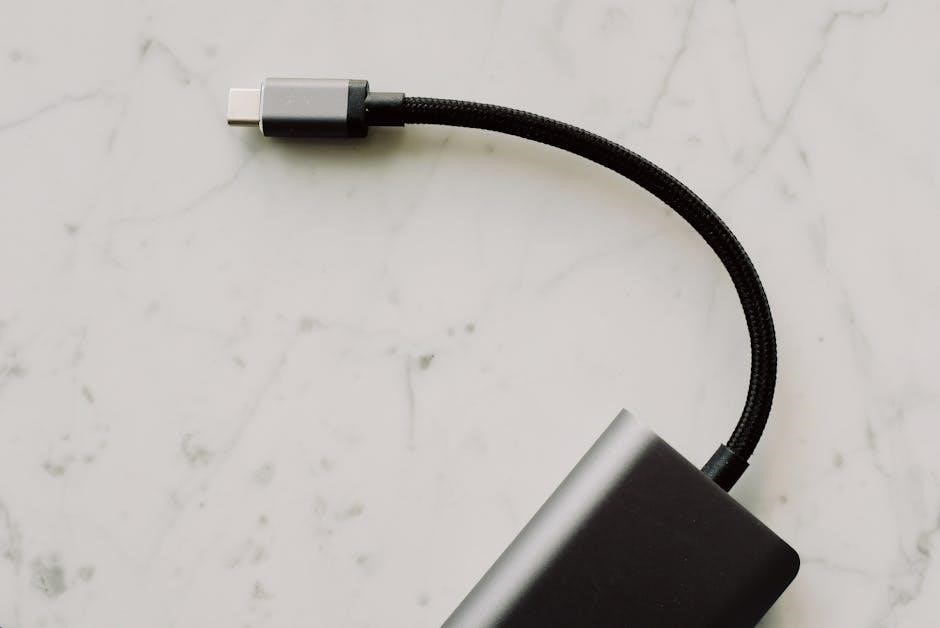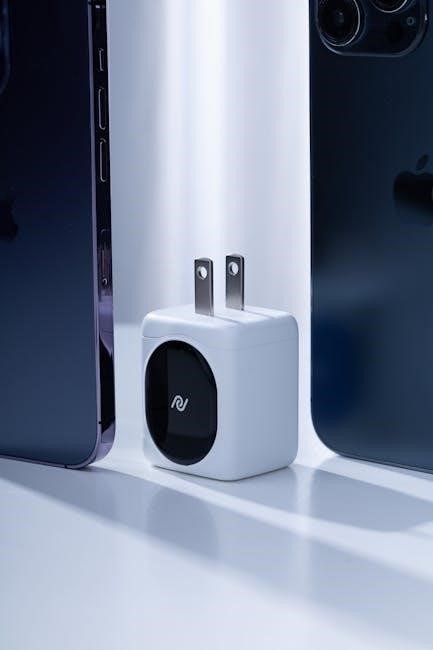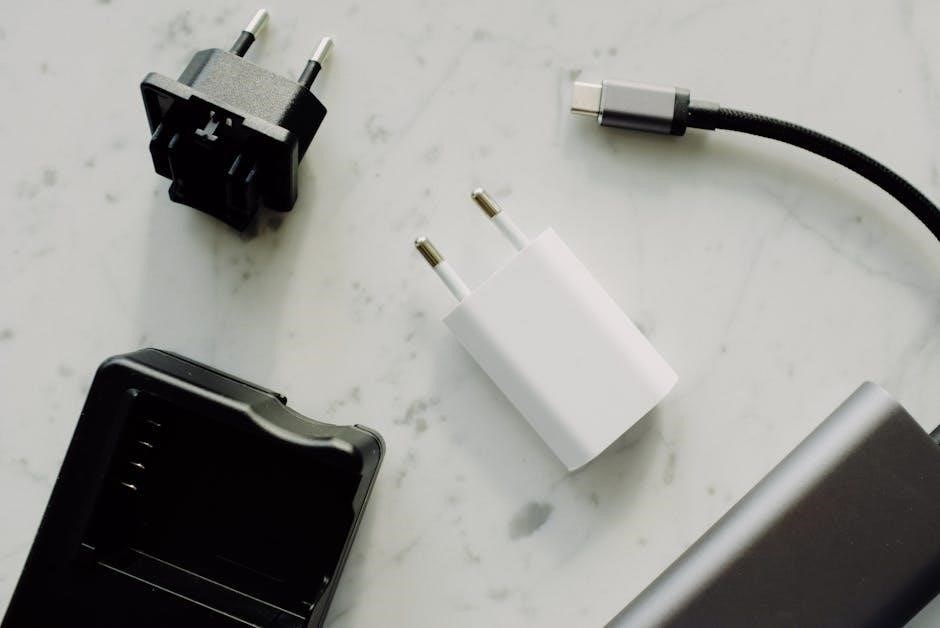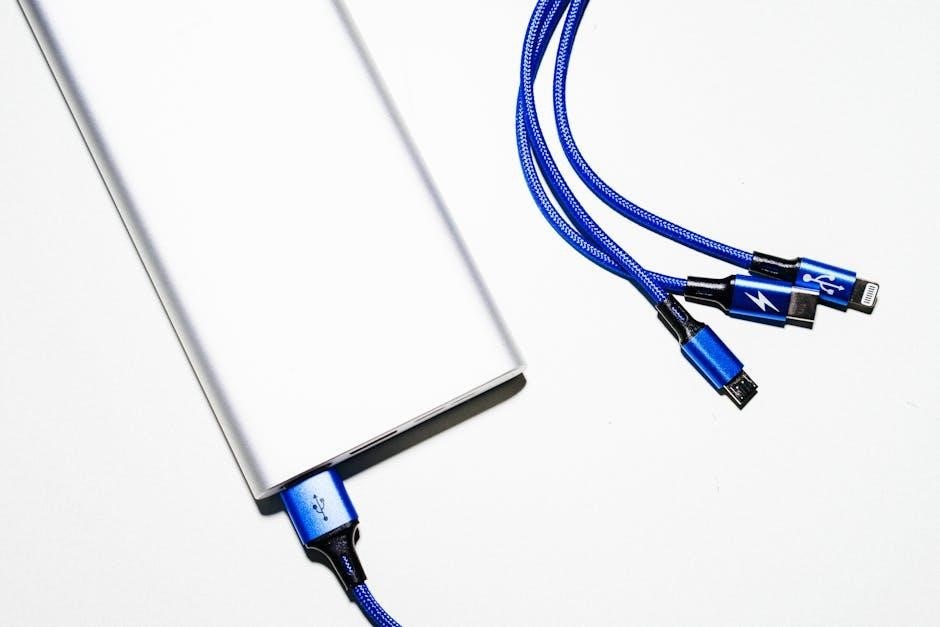c tek charger manual

c tek charger manual
CTEK offers high-quality battery chargers for various applications, ensuring optimal performance and safety. Their manuals provide essential guidance for proper usage and maintenance of the chargers.
1.1 Overview of CTEK Battery Chargers
CTEK battery chargers are renowned for their advanced technology and versatility, supporting various battery types, including lead-acid and lithium. They offer fully automatic operation, multiple charging modes, and features like temperature compensation and low back current, ensuring safe and efficient charging. Designed for durability and ease of use, CTEK chargers cater to both professionals and enthusiasts, making them a trusted choice for maintaining battery health.
1.2 Importance of Reading the Manual
Reading the manual is crucial for safe and effective use of CTEK chargers. It provides detailed instructions, safety precautions, and troubleshooting tips, ensuring users understand charger operations and battery compatibility. Proper manual adherence prevents accidents, optimizes charging performance, and protects both the charger and battery. It also outlines warranty terms and maintenance guidelines, helping users maximize their investment and maintain reliability over time.

Safety Precautions and Warnings
Always follow safety guidelines to prevent accidents. Handle plugs and cords carefully, avoiding improper connections. Ensure the charger is used for its intended purpose to minimize risks.
2.1 General Safety Guidelines
Always read the manual before use to ensure safe operation. Properly connect the charger to avoid short circuits. Keep the charger away from water and flammable materials. Ensure good ventilation and avoid overheating. Never touch electrical components with wet hands. Store the charger in a dry, cool place when not in use. Follow all warnings and instructions provided by CTEK to prevent accidents.
2.2 Safety Features of CTEK Chargers
CTEK chargers are equipped with advanced safety features, including overcharge protection, short-circuit prevention, and temperature control. They have built-in fuses and automatic shut-off to ensure safe operation. The chargers meet international safety standards and are designed to prevent electrical hazards. These features protect both the battery and the user, providing reliable and secure charging experiences for all types of batteries.

Key Features of CTEK Chargers
CTEK chargers offer high performance and reliability with features like fully automatic charging, multiple modes, and temperature compensation, ensuring optimal charging for lead-acid and lithium batteries.
3.1 Fully Automatic Charging
CTEK chargers feature fully automatic charging, enabling seamless operation without manual intervention. Their microprocessor-controlled technology adapts to battery type and condition, ensuring safe and efficient charging for lead-acid and lithium batteries. This advanced system automatically detects and adjusts charging parameters, providing optimal results while minimizing user effort and potential errors.
3.2 Multiple Charging Modes
CTEK chargers offer multiple charging modes to cater to different battery types and conditions. These modes include standard charging, maintenance charging, and reconditioning, ensuring optimal performance for lead-acid and lithium batteries. The chargers automatically detect the battery type and adjust settings, providing tailored charging solutions to prevent overcharging and extend battery lifespan. This versatility makes CTEK chargers suitable for various applications and user needs.
3.3 Temperature Compensation
CTEK chargers incorporate advanced temperature compensation to ensure safe and efficient charging. This feature adjusts the charging voltage based on ambient temperature, preventing overcharging in hot conditions and undercharging in cold environments. It maintains optimal battery health and extends lifespan, making it ideal for use in varying climatic conditions without compromising performance or safety.
3.4 Low Back Current
CTEK chargers are designed with low back current technology, minimizing energy loss when the charger is not actively charging. This feature reduces unnecessary battery drain, preserving battery life and ensuring efficient energy use. It is particularly beneficial for maintenance charging, where the charger remains connected for extended periods without drawing excessive power from the battery.

How to Use the Charger
Connect the charger to the battery, then plug it into a wall socket. The charger automatically detects and charges the battery, ensuring a safe and efficient process.
4.1 Connecting the Charger to the Battery
To connect the CTEK charger to the battery, ensure the charger is off. Attach the positive (red) clamp to the positive terminal and the negative (black) clamp to the negative terminal. Avoid touching the terminals to prevent short circuits. Ensure correct polarity to prevent damage. Once connected, the charger will automatically detect the battery type and begin the charging process safely and efficiently.
4.2 Connecting to the Wall Socket
Plug the charger’s mains cable into a suitable wall socket. Ensure the socket is grounded and meets the charger’s power requirements. Once connected, the power lamp will illuminate, indicating the charger is ready for operation. The charger will then automatically begin the charging process once properly connected to the battery. Always ensure the charger is placed on a stable, dry surface during operation.
4.3 Following the Charging Process
Once connected to the battery and wall socket, the charger will automatically begin charging. Monitor the charging process via the indicator lamps, which show the current charging phase. The charger operates in multiple steps, ensuring optimal charging. Avoid disconnecting the charger until the process is complete, as indicated by the charger’s status lights. Always refer to the manual for specific charging phase details.

Troubleshooting Common Issues
Check error lights for fault codes. Common issues include incorrect connections or battery type mismatches. Refer to the manual for specific error solutions and troubleshooting steps.
5.1 Error Indications and Solutions
CTEK chargers feature error indicators to alert users of issues. Common errors include E1 (short circuit), E2 (high battery voltage), and E3 (thermal error). Solutions involve checking connections, ensuring proper battery types, and allowing the charger to cool. Refer to the manual for specific error codes and detailed troubleshooting steps to resolve issues effectively and safely.

Maintenance and Care
Regularly clean the charger and store it in a dry, cool place. Avoid extreme temperatures and moisture to ensure optimal performance and longevity of the device.

6.1 Storage Tips
Store the charger in a dry, cool environment to prevent damage. Avoid exposure to extreme temperatures and moisture, ensuring the unit remains in optimal condition. Proper storage preserves battery health and prolongs the charger’s lifespan. Always disconnect and clean the charger before storing it for extended periods.
6.2 Cleaning the Charger
Clean the charger regularly using a soft, dry cloth to remove dust and dirt. Avoid harsh chemicals or liquids, as they may damage the unit. For stubborn stains, dampen the cloth slightly with mild detergent, but ensure no moisture enters the charger. Proper cleaning ensures optimal performance and prevents corrosion. Always unplug the charger before cleaning for safety.

Warranty Information
CTEK chargers come with a 2-year warranty covering manufacturing defects. For detailed warranty terms, refer to the user manual or visit the official CTEK website.
7.1 Warranty Coverage
CTEK chargers are backed by a warranty covering manufacturing defects for up to 5 years, depending on the model. The warranty applies to chargers used as directed, excluding misuse or improper installation. For specific details, refer to the product’s manual or contact CTEK support via their website, email, or phone.
7.2 Contacting CTEK Support
For assistance, visit www.ctek.com to access FAQs, manuals, and support resources. You can also contact CTEK via email at email160;protected, or by phone at +46(0)225 351 80. They offer professional help with product inquiries and troubleshooting, ensuring customer satisfaction and resolving issues promptly. This support ensures users get the most out of their CTEK products.

Comparing CTEK Chargers with Other Brands
CTEK chargers are renowned for their advanced features, durability, and reliability, making them a top choice over competitors like NOCO. They offer superior automatic charging and safety.
8.1 CTEK vs. NOCO Chargers
CTEK and NOCO are leading brands in battery chargers, offering high-quality products; CTEK is known for its advanced features like automatic temperature compensation and low back current, while NOCO is praised for its user-friendly designs and wide range of models. Both brands cater to different needs, with CTEK often favored by professionals and NOCO preferred by everyday users. Both offer reliable performance and competitive warranties.

How to Choose the Right CTEK Charger
Selecting the right CTEK charger involves considering your battery type, capacity, and charging needs. Choose models compatible with your battery’s chemistry and size for optimal performance.
9.1 Battery Type and Capacity
Choosing the right CTEK charger depends on your battery type (lead-acid, lithium, or AGM) and capacity. CTEK chargers support a wide range of batteries, from small 1.2Ah to large 500Ah capacities. Ensure compatibility by selecting models like the MXS 10 for lead-acid batteries or specific lithium-compatible chargers. Proper matching ensures efficient charging and prevents damage to your battery. Always refer to the manual for exact specifications.
9.2 Charging Speed and Modes
CTEK chargers offer multiple charging modes to suit different needs, including normal, boost, and maintenance. The MXS 10 supports 8-step charging, while the XS 0.8 is ideal for smaller batteries. Charging speed varies by model, with options for rapid charging or gentle maintenance. Select the mode based on your battery type and requirements for optimal performance and longevity. Always refer to the manual for mode specifics.